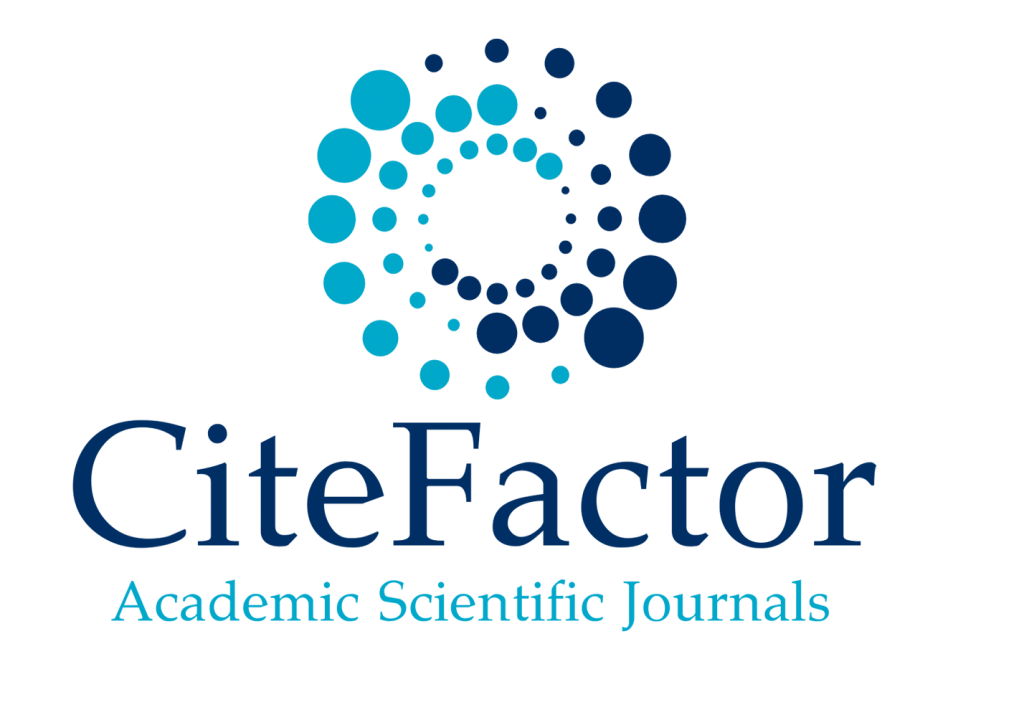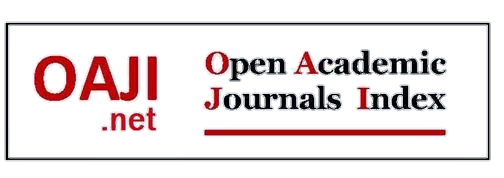Credit Facility and Financial Inclusion and Development: An Evaluation of the Contribution of Jaiz Bank Plc 2013-2023
1Sani Damamisau Mohammed, 2Ahmed Ibrahim Mohammed, 3Sunusi Garba
1Department of Taxation, Faculty of Management Sciences, Federal University Dutse
2Department of Banking and Finance, Faculty of Management Sciences, Federal University Dutse
3Department of Accounting, Faculty of Management Sciences, Federal University Dutse
https://doi.org/10.47191/jefms/v8-i4-26
ABSTRACT:
The main aim of this study is to evaluate the contributions of Jaiz bank in granting of loan facilities to interested and qualified Nigerian citizens in the banking system 2013-2023. To achieve this aim, quantitative secondary data on loan granted by Jaiz bank Plc and thirteen interest based commercial banks is collected from their annual reports and accounts. Collected data is analyzed using descriptive statistical tools of percentages, tables, charts and figures. Public policy analytical framework that aid in finding the usefulness or otherwise of public policies guided the conduct of the study. Results from the analyzed data revealed that while interest based commercial banks are the dominant players in granting loan, loan granted by Jaiz bank is low but consistently adding to its niche 2013-2023. Similarly, the loan granted by Jaiz bank Plc has shown year in year out growth 2013-2023 thereby widening the contribution of the bank in granting loan which could otherwise be not accessed by citizens from the interest based commercial banks. The policy implications of results from this study are that policy makers need to further formulate policies that could strengthen the operations of Jaiz bank Plc. Similarly, this could have the implication of the need for policy makers to further encourage or stimulate the establishment of more non-interest banks in the Nigerian banking system.
KEYWORDS:
Jaiz Bank Nigeria Plc; Non-interest Bank; Commercial Banks; Loan; Public Policy;
REFERENCES:
1) Acar, A. (2019). The effects of political stability on economic growth of the presidential government system. International Journal of Economics and Politics Sciences Academic Researches, 3(9), 8-31
2) Adhikari, G. M., Mahara, T. S., and Dahal, J. (2024). Relationship between Bank Credit and Economic
3) Growth: Evidence from Nepal. NCC Journal, 9(1), 121-132
4) Akintoye, A. (2015). Developing Theoretical and Conceptual Frameworks, EDMIC Research Workshop, OAU, Ile Ife, Nigeria. Retrieved from file:///C:/Users/sani/Downloads/ecitydoc. com_akintola-akintoyedeveloping-theoretical-andconceptual.pdf
5) Almarzoqi, R. M. (2014). The Role of Islamic Finance in Economic Development. In: Atbani, F.M., Trullols, C. (eds) Social Impact Finance. IE Business Publishing. Palgrave Macmillan, London. https://doi.org/10.1057/9781137372697_6
6) Amin, S., & Murshed, S. M. (2022). Diversity matters in the world of finance: does ethnic and religious diversity hinder financial development in developing countries? International Institute of Social Studies of Erasmus University Rotterdam (ISS), The Hague. Working Paper No. 692. Retrieved from https://repub.eur.nl/pub/137094/wp692.pdf
7) Amin, S., Yasin, I., Rutkowska-Ziarkoc, A. (2023). Diversity-inclusion nexus: assessing the role of ethnic and religious diversity in financial inclusion; a global perspective. Economic Research-Ekonomska Istraživanja, 36(1), 1205-1225
8) Anenechi, N. S., Steve, E. E., & Nwaogaidu, J. C. (2024). The effect of credit facilities on corporate financial performance of consumer goods firms in Nigeria. Journal of Xi’an Shiyou University, Natural Science, 20(3), 121-153
9) Anyangwe, T., Vanroose, A., & Fanta, A. (2022). Determinants of financial inclusion: does culture matter? Cogent Economics & Finance, 10(2073656),1-24.
10) Asaolu, A. A. (2022). Evaluation of Non-Interest Banking and Financial Inclusion in Nigeria. Elizade University International Journal of Management, 1(1),44-62.
11) Ashindorbe, K. (2018). Electoral Violence and the Challenge of Democratic Consolidation in Nigeria. India Quarterly: A Journal of International Affairs, 74(1), 92–105.
12) Bakar, H. O., Sulong, Z., & Chowdhury, M. A. F. (2020). The role of financial development on economic growth in the emerging market countries of the Sub-Saharan African (SSA) region. International Journal of Emerging Markets, 17(3), 789-811
13) Banking Industry Architecture Network (2025). Credit Facility. Retrieved from https://bian.org/ servicelandscape-9-0/object_14.html?object=31851
14) Beekhuis, G., To, J., Waita, N., & Mekonnen, R. (2025). A New Debt Deal for Africa: Breaking the Vicious Cycle. Retrieved from https://institute.global/insights/economic-prosperity/a-new-debt-deal-for-africa-breaking-the-vicious-cycle
15) Bitetto, A., Cerchiello, P., & Mertzanis, C. (2023). Measuring financial soundness around the world: A machine learning approach. International Review of Financial Analysis, 85(c), 1-14
16) Broadbent, E., Ennis, H. M., Pike, T. J., & Sapriza, H. (2024). Bank Lending Standards and the U.S. Economy. Federal Reserve Bank of Richmond Working Papers Series, WP 24-07. http://www.richmondfed.org/publications/
17) Bromley, D.W. (1990). The ideology of efficiency: searching for a theory of policy analysis. Journal of Environmental Economics and Management, 19(1), 86-107. https://doi.org/10.1016/ 0095-0696(90)90062-4
18) CEIC (2024). Kenya Government Debt: % of GDP. Retrieved from https://www.ceicdata.com/en/indicator/kenya/government-debt--of-nominal-gdp#:~:text=Kenya %20government%20debt%20to%20GDP,of%2039.7%20%25%20in%20Mar%202010.
19) Central Bank of Nigeria (2020). Monetary, credit, foreign trade and exchange policy guidelines for fiscal years 2020/2021. Retrieved from https://www.cbn.gov.ng/out/2020/ccd/credit%20 guidelines%202020-21.pdf
20) Centre for Disease Control and Prevention (2015). What is policy. Retrieved from https://www.cdc.gov/policy/analysis/process/definition.html#:~:text=What%20is%20%E2%80%9
CPolicy%E2%80%9D%3F,frequently%20reflected%20in%20resource%20allocations
21) Chehayeba. R. J., & Taher, H. (2024). The Relationship between Financial Inclusion and Economic Growth Empirical Study from MENA Countries. Global Business & Finance Review, 29(7), 153-167
22) Chen, J. & Ji, Y. (2023). Finance and local economic growth: New evidence from China. International Journal of Finance & Economics, (), 1-30.
23) Chiad, F., Gherbi, A. (2024). The Role of Islamic Banks in Promoting Economic Growth and Financial Stability: Evidence from Saudi Arabia. Munich Personal RePEc Archive, MPRA Paper No. 122409. Retrieved from https://mpra.ub.uni-muenchen.de/122409/1/MPRA_paper_122409 .pdf
24) Credlix (2024). How credit facilities can support your business cash flow. Retrieved from https://www.credlix.com/blogs/how-credit-facilities-can-support-your-business-cash-flow
25) Demirguc-Kunt, A., Klapper, L., & Singer, D. (2017). Financial Inclusion and Inclusive Growth: A Review of Recent Empirical Evidence. World Bank Policy Research Working Paper 8040. Retrieved from https://papers.ssrn.com/sol3/papers.cfm?abstract_id=2958542
26) Drehmann, M., & Yetman, J. (2021). Which Credit Gap Is Better at Predicting Financial Crises? A Comparison of Univariate Filters. International Journal of Central Banking, 17(4), 225-255
27) Ekperiware, M., Akinrinola, O. O., Ademiju, A., Ejima, S., & Ogbogbo, O. G. (2022). Effects of public debt on economic growth in Nigeria. Caleb Journal of Social and Management Sciences, 7(1), 30-53
28) Essien, S. N., Agboegbulem, N. T. I., Mba, M. K. & Onumonu, O. G. (2016). An Empirical Analysis of the Macroeconomic Impact of Public Debt in Nigeria. Central Bank of Nigeria Journal of Applied Statistics, 7(1a), 125-145
29) Eurostat (2025). Government debt at 88.2% of GDP in Euro area. Retrieved from https://ec.europa.eu/eurostat/web/products-euro-indicators/w/2-22012025-ap#:~:text=At%20the %20end%20of%20the%20third%20quarter%20of%202024%2C%20the,unchanged%20and%20stood%20at%2081.6%25.
30) Federico, D., Grazioli, R., Milioli, M. A, Notte, A. (2021). Poletti L Financial and social inclusion in Europe. European Investment Fund Research and Market Analysis Working Paper 2021/72. Retrieved from https://www.econstor.eu/bitstream/10419/232575/1/1752696492.pdf
31) FintechOS Documentation (2025). Credit Facilities. Retrieved from https://docs.fintechos.com/APs/CoreBanking/3.3/UserGuide/Content/CreditFacility/CreditFacilities.htm
32) Fulton, S., & Krainovich-Miller, B. (2010). Gathering and Appraising the Literature. In LoBiondo-Wood G, Haber J (Eds) Nursing Research: Methods and Critical Appraisal for Evidence Based Practice. (Seventh Edition. Mosby Elsevier, Missouri, 2010, 56 – 84.
33) Fundji, O. J. (2024). The Impact of Financial Inclusion on Economic Growth based on East, West and Southern Africa. International Journal of Economics and Financial Issues, 14(5), 203-209
34) Garcia-Escribano, M., & Han, F. (2015). Credit Expansion in Emerging Markets: Propeller of Growth? International Monetary Fund Working Paper WP/15/212. https://www.imf.org/external/pubs/ft/wp/2015/wp15212.pdf
35) Gupta, V. (2021). Contribution of Bank's Credit to GDP Growth. Retrieved from https://www.linkedin.com/pulse/contribution-banks-credit-gdp-growth-vikram-gupta/
36) Idree, M. A., Minhas, A. A., Naveed, J., & Khan, A. (2022). Role of Islamic Banking in Economic Growth of Pakistan. Journal of Accounting and Finance in Emerging Economies, 8(1):165-178
37) Ighoroje, J. E., & Emmanuel, A. O. (2022). Bank Credit Facilities and SMEs’ Performance in Nigeria. European Modern Studies Journal, 6(3), 236-244
38) Kamalu, K., & Ibrahim, W. H. B. W. (2021). Islamic Banking Development and Financial Inclusion in OIC Member Countries: The Moderating Role of Institutions. Journal of Islamic Monetary Economics and Finance, 7(3), 527 – 544
39) Keene Advisors (2017). Understanding the terms and covenants in a credit facility lending agreement. Retrieved from https://www.keeneadvisors.com/news-and-insights/credit-facility-loan-covenants
40) Kivunja, C. (2018). Distinguishing between theory, theoretical framework, and conceptual framework: A systematic review of lessons from the field. International Journal of Higher Education, 7(6):44-53
41) Law, H. S., Kurtan, A. M., & Naseem, N. A. (2017). The role of institutions in finance curse: evidence from Iinternationaldata. Journal of Comparative Economics, 46(1):174-191
42) Miguel A. Flores Segoviaa, M. A. F., & Cepeda, L. E. T. (2024). Financial development and economic growth: New evidence from Mexican States. Regional Science Policy & Practice 16(2), 1-10.
43) Mikebanyi, P., & Kigabo, T. R. (2021). Financial Development and Economic Growth: The Case of Rwanda. BNR Economic Review, 18(), 84-119
44) Mobolaji, H. I. (2011). The role of non-interest banking in national economic development. Central Bank of Nigeria Bullion, 35(3):17-27
45) Mohieldin, M., Hussein, K., Rostom, A. (2019). On financial development and economic growth in Egypt, Journal of Humanities and Applied Social Sciences, 1(2), 70-86
46) Muhammad, M. Y., & Ngele, A. N. (2023). Deposit money bank’s credit to private sector and economic growth in Nigeria. Journal of Global Social Sciences, 4(14), 205-222
47) Muhammad, T., & Dauda, S. A. (2018). Islamic Finance in Promoting Economic Growth in Nigeria. South East Asia Journal of Contemporary Business, Economics and Law, 15(5), 41-45
48) Nathan, E. & Uche, W. J. (2022). Impact of Credit Facilities to Private Sector Businesses on Nigeria’s Real Gross Domestic Product (RGDP), 1980 – 2021. Journal of Economics, Finance and Management Studies, 5(10), 3035-3044
49) Olannye, V. I., Maku, E. O., & Adelowokan, O. A. (2023). The Relative Impact of Domestic Credit to the Private and Public Sectors on Economic Growth in Nigeria. Kampala International University Journal of Social Sciences, 9(1), 231–241
50) Olawale, N. A., & Olayiwola, B. O. (2024). The Role of Commercial Banks in Economic Growth in the UK. IRE Journals, 8(5), 227-251.
51) Olowofeso, E. O., Adeleke, A. O., Udoji, A. O. (2015). Impact of Private Sector Credit on Economic Growth in Nigeria. Central Bank of Nigeria Journal of Applied Statistics, 6(2), 81-101
52) Onwioduokit, E., & O’Neill., H. (2023). Bank credit dynamics and its influence on output growth in the Nigerian economy. Munich Personal RePEc Archive Paper No. 119552. Retrieved from https://mpra.ub.uni-muenchen.de/119552/
53) Onwukanjo, K. C., Anumudu, C. N., & Ugwuanyi, C. U. (2024). Financial Inclusion and Economic Growth of Nigeria. Sapientia Global Journal of Arts, Humanities and Development Studies, 7(1), 277 – 294
54) Onyenwife, K. C., Ezeanyeji, C. I., Ekesiobi, I (2023). Public Debt and Economic Growth in Nigeria: A Consideration of New Evidence. Timisoara Journal of Economics and Business, 16(), 1-24
55) Ozili, P. K., Oladipo, O., & Iorember, P. (2023). Effect of abnormal increase in credit supply on economic growth in Nigeria. Munich Personal RePEc Archive (MPRA) Paper No. 115988. https://mpra.ub.uni-muenchen.de/115988/
56) Pal, S., Vankila, S., Fernandes, M. N. (2025). Interplay of Financial Inclusion and Economic Growth in Emerging Economies. World Development Sustainability, 6():1-17
57) Patel, M., & Patel, N. (2019). Exploring Research Methodology: Review Article. International Journal of Research & Review, 6(3), 48-55
58) Patton, Q. M. (1987). How to use qualitative methods in evaluation. Newsbury Park, London, New Dehli: Sage Publications
59) Salisu, S. M., Jibril, H. A., & Zayyana, H. (2024). Impact of Religion and Culture on Financial Inclusion in Katsina State, Nigeria. Umaru Musa Yaradua University Journal of Economics and Development, 1(1),159-170.
60) Santoso, I. R, Canon, S., & Pakaya, A. (2019). The Role of Islamic Financial Institutions in Supporting Economic Growth in the Digital Era: Case Study in Indonesia. Proceedings of the First International Conference on Islamic Development Studies, Bandar Lampung, Indonesia, 10 September 2019.
61) Svirydzenka, K. (2016). Introducing a New Broad-based Index of Financial Development. International Monetary Fund Working Paper No. WP/16/5. Retrieved from https://www.imf.org/external/pubs/ft/wp/2016/wp1605.pdf
62) Tabash, M. I, Abdulkarim, F. M., Akinlaso, M. I, & Dhankar, R. S. (2022). Islamic banking and economic growth: fresh insights from Nigeria using autoregressive distributed lags (ARDL) approach. African Journal of Economic and Management Studies, 13(4), 582-597
63) The Southern Bank Company (2025). Credit Facility. Retrieved from https://altline.sobanco. com/glossary/credit-facility/
64) The World Bank Group (2025). Domestic credit to private sector (% of GDP) - European Union. Retrieved from https://data.worldbank.org/indicator/FS.AST.PRVT.GD.ZS?locations=EU
65) Trading Economics (2025a). United States Gross Federal Debt to GDP. Retrieved from https://tradingeconomics.com/united-states/government-debt-to-gdp#:~:text=The%20United% 20States%20recorded%20a,Gross%20Domestic%20Product%20in%202023.
66) Trading Economics (2025b). France Government Debt to GDP. Retrieved from https://tradingeconomics.com/france/government-debt-to-gdp#:~:text=France%20recorded%20a %20Government%20Debt,percent%20of%20GDP%20in%201980.
67) Trading Economics (2025c). United Kingdom Public Sector Net Debt to GDP. Retrieved from https://tradingeconomics.com/united-kingdom/government-debt-to-gdp#:~:text=Public%20 Sector%20Net%20Debt%20in,the%202023%2D24%20fiscal%20year.
68) Trading Economics (2025d). South Africa Government Debt to GDP. Retrieved from https://tradingeconomics.com/south-africa/government-debt-to-gdp#:~:text=South%20Africa %20recorded%20a%20Government,percent%20of%20GDP%20in%202008.
69) Trading Economics (2025e). Egypt Government Debt to GDP. Retrieved from https://tradingeconomics.com/egypt/government-debt-to-gdp
70) Ugli, A. U. J. (2024). Assessing the Impact of Financial Inclusion on Economic Growth in Post-Soviet Countries: A Cross-Sectional Analysis. Unpublished Master’s Thesis from Graduate School of Public Policy the University of Tokyo, Retrieved from https://www.pp.u-tokyo.ac.jp/wp-content/uploads/2016/02/Assessing-the-Impact-of-Financial-Inclusion-on-Economic-Growth-in-Post-Soviet-Countries-A-Cross-Sectional-Analysis.pdf
71) Wafure, O. G., Musa, I., & Yetunde, K. A. (2024). Impact of Development Bank’s Credit Financing on Small and Medium-Scale Enterprises Performance. Journal of Economics, Innovative Management, 2(3), 25-37.
72) World Bank Group (2025). Domestic credit to private sector (% of GDP). Retrieved from https://data.worldbank.org/indicator/FS.AST.PRVT.GD.ZS
73) World Bank Group (2025a). Financial Inclusion is a key enabler to reducing poverty and boosting prosperity Retrieved fromhttps://www.worldbank.org/en/topic/financialinclusion/overview#: ~:text=Financial%20inclusion%20means%20that%20individuals,Sustainable%20Development%20Goals%20(SDGs)
74) World Bank Group (2025b). Financial development. Retrieved from https://www.worldbank.org/en/publication/gfdr/gfdr-2016/background/financial-development#: ~:text=Importance%20of%20financial%20development&text=Additionally%2C%20it%20 reduces%20poverty%20and,result%20in%20higher%20income%20generation
75) Yang, M., Bento, P., & Akbar, A. (2019). Does CSR Influence Firm Performance Indicators? Evidence from Chinese Pharmaceutical Enterprises, Sustainability, 11(5656),1-18
76) Yusuf, A., & Mohammed, S. (2021). The impact of government debt on economic growth in Nigeria. Cogent Economics & Finance, 9(1), 1-19
77) Zarrouk, H., El Ghak, T., & Al Haija, E. A. (2017). Financial development, Islamic finance and economic growth. Evidence of the UAE. Journal of Islamic Accounting and Business Research, 8(2-22)
















